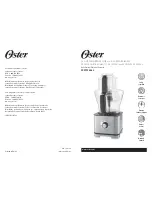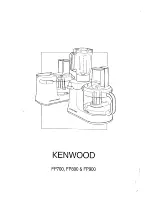
UG-707
ADV8005 Hardware Reference Manual
APPENDIX A
PCB LAYOUT RECOMMENDATIONS
is a high precision, high speed, mixed signal device. It is important to have a well laid out PCB board in order to achieve the
maximum performance from the part. The following sections are a guide for designing a board using the
Analogue/Digital Video Interface Outputs
The HDMI TMDS trace pairs must have a 100Ω differential impedance and should be routed in the shortest trace length possible to minimize
the possibility of cross talk with other signals. The HDMI TMDS trace pairs must be routed on the same side of the PCB as the
should not be routed through vias to any other layers. A solid plane must be maintained underneath the HDMI TMDS trace pairs for their full
trace length. Any external ESD suppressors should be placed as close as possible to the HDMI connector to reduce the impact on impedance
TDR measurements.
If the
is to support 3 GHz signals from the HDMI Txs, it is recommended the TMDS trace widths are set to 0.2 mm. The spacing of
the traces, the height of the copper and the trace’s height above the ground plan should all be controlled to maintain the trace impedance with
this trace width.
The encoder analog outputs must have a 75Ω characteristic impedance and should be routed in the shortest trace length possible to minimize
the possibility of cross talk with other signals. To assist in reducing cross talk, ground traces can be added between adjacent encoder analog
outputs. The encoder analog outputs must be routed on the same side of the PCB as the
and should not be routed through vias to any
other layers. A solid plane must be maintained underneath the encoder analog outputs for their full trace length. The termination resistors on
the encoder analog outputs should be kept as close as possible to the
. Any external filtering on the encoder outputs should be placed
as close as possible to the analog connectors.
External DDR2 Memory Requirements
The
must be placed as close to and on the same side of the PCB as the external DDR2 memories. Balanced T-routing should be used
for all shared connections between the
and the external DDR2 memories. All traces should be 75Ω and impedance controlled to
ensure robust timing. Traces should be routed on the same side of the PCB as the devices where possible. If this is not possible, all traces should
be kept on the outer layers.
All differential signals (for example, DDR_CK and DDR_CKB) should be treated as described above. These signals should be routed in parallel
and on the same side of the PCB. Match the DDR_CK trace length to DDR_CKB trace length to 20 mils (0.5 mm). Any stubs on the clock lines
should be kept as short as possible to avoid signal reflections.
The following 4-byte wide data lanes should be matched to within 50 mils on the PCB layout. The precise matching of these signals is critical.
•
DDR3_DM3, DDR_DQS3, DDR_DQSB3, DDR_DQ31 – DDR_DQ24
•
DDR2_DM2, DDR_DQS2, DDR_DQSB2, DDR_DQ23 – DDR_DQ16
•
DDR1_DM1, DDR_DQS1, DDR_DQSB1, DDR_DQ15 – DDR_DQ8
•
DDR0_DM0, DDR_DQS0, DDR_DQSB0, DDR_DQ7 – DDR_DQ0
Different byte lanes are to be matched to 200 mils (5.08 mm) of each other. 47Ω series termination resistors should be placed as close to the
source (ADV8005) as possible on the following signals:
•
Address signals – DDR_A12-DDR_A0 and DDR_BA0-DDR_BA2
•
Clock differential signals – DDR_CK and DDR_CKB (use discrete resistors for these two signals)
•
Control signal – DDR_CKE and command signals – DDR_CSB, DDR_RASB, DDR_CASB, and DDR_WEB
•
Data mask signals – DDR_DM3-DDR_DM0
Rev. A | Page 288 of 317
















































